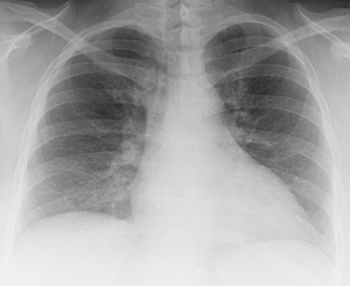XRAY; RADIOLOGY
An X-ray is a test that uses a small amount of electromagnetic radiation. X-ray beams are emitted by a machine as individual "particles" (photons). These particles pass through the body and are detected by a special film (or Xray plate) located on the opposite side of the body. It is a very simple and inexpensive way to see a 2-dimensional picture of the body.
A Radiology Technologist is a trained health care provider that performs x-ray tests. A Radiologist is a medical doctor who specializes in the interpretation of Xray and other diagnostic tests such as ultrasounds, CAT scans and MRI scans. Although critical care physicians review all Xrays and scans as soon as they are done, all of these tests are also "read" or interpreted by a radiologist.
An Interventional Radiologist is a Radiologist who has additional specialty training. These doctors use Xray or ultrasound to guide the guide the insertion of special catheters and drains when needed. They can also performed specialized procedures such as passing tiny catheters into blood vessels to block of the blood flow and stop bleeding.
|
VIrtually any part of the body can be X-rayed. Tissue that has very little density will appear black (for example lungs that are filled with air). Metals and dense tissue appear white (for example bone). Although an X-ray does not provide the detail that a CAT scan or MRI produces, it can be performed at the bedside. Images are immediately available for the team to review. X-rays are very good at identifying the location of invasive tubes (such as central lines, endotracheal tubes or chest tubes). They are also very good for picking up common complications in the chest (such as pneumothorax or hemothorax) or for identifying fractures. If more detailed pictures are needed, an ultrasound, CAT scan or MRI may be ordered. Each test has specific indications where it may be the best investigation. For example, an ultrasound is best to identify a blood clot in a blood vessel. A CT is very good for examining bones an picking up blood. An MRI is a better test when you want to examine tissues.
|
Last Reviewed: October 31, 2018




